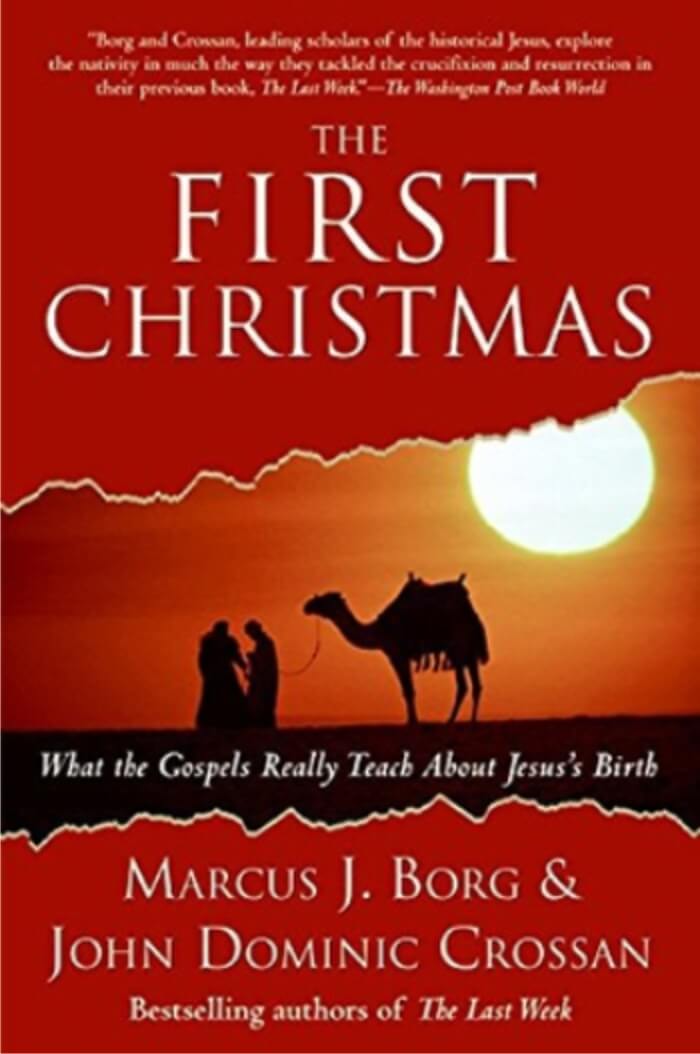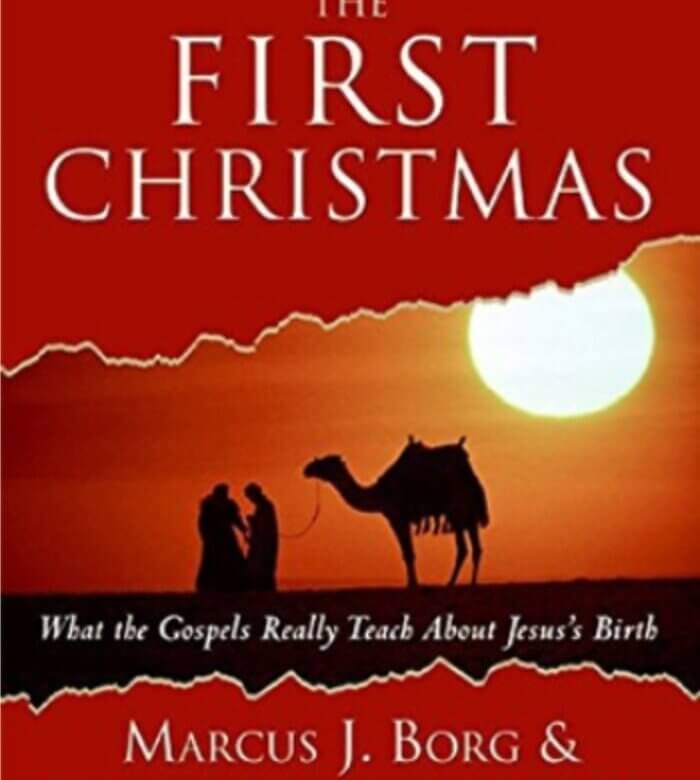The First Christmas by Marcus Borg & John Dominic Crossan
A Book Review by John Madigan, Ottawa Valley
Volume 35 Issue 10, 11 & 12 | Posted: December 23, 2021

A few years ago, a friend recommended The First Christmas as a book I might enjoy reading during the Advent and Christmas seasons. Sure enough! And I keep returning to it each year to seek out some deeper meanings behind the birth and life of Jesus. I have read other books and watched YouTube videos by the scripture scholars Marcus Borg and John Dominic Crossan, and I have been grateful for the insights they have given me in my understandings of scripture. In this age of digital and social media one needs to take the responsibility to read critically and to seek out new insights behind the biblical stories so many of us have taken literally all these years.
Most of us probably know best the Christmas story usually used in the Gospel at the ‘Midnight Liturgy’, Luke’s story; “In those days a decree went out from Caesar Augustus that all the world should be registered.” If we were setting up the Christmas crib in our front yard or at our church, we would probably build the scene based on what we thought was Luke’s version and ensure to reflect those props we have been so accustomed to: a stable, the manger, Joseph, Mary, and the baby Jesus wrapped in swaddling clothes, shepherds visiting, angels hovering with hymn sheets, an overhead star, and, of course, three kings bearing gifts.
But there are really two Christmas stories and Matthew’s version is quite different. As the crib manager one might be miffed if someone were to point out that according to Matthew, Jesus was born in a house, that there is no mention of a stable, and no three kings in either story, but ‘some wise men’ – perhaps the idea of three came from the three gifts of gold, frankincense, and myrrh, or from a hymn in a later tradition, We Three Kings of Orient Are. The authors point out that there is no journey to Bethlehem, no story of his birth, and the star halts over a house not a stable in Bethlehem. And Matthew has no angels singing in the night sky, and no shepherds. In addition, there is no story of Jesus’ circumcision, no story of him being blessed in the temple as an infant by Simeon and Anna, and no story of him later at age twelve in the temple amazing the teachers with his wisdom. All of these are in Luke. The common features of both stories are the main characters, Joseph, Mary, and Jesus.
Luke begins his story with the birth and life of John the Baptist, the annunciation, the visitation, the birth, and circumcision of John the Baptist. Matthew begins his much shorter story with a genealogy of Jesus. It is Matthew who tells us of the visit of the Magi, the flight into Egypt and the massacre of the “Holy Innocents”.
While the two stories tell us about the first Christmas, most of us are not familiar with how different they are. We know the stories in parts and usually just combine or blend them as if they were one story. However, the authors are determined to seriously point out that these stories are not to be dismissed just because the facts don’t match or discredited as made-up fairy tales unworthy of serious attention. Their differences are crucial to understanding why they are different. That is the foundation of the book.
The basic question is what did these stories mean in the context of the first century and what is the contemporary understanding for us today living in our western world ‘empires’? The authors tell us, “We think hearing their ancient and contemporary meanings matters particularly for American Christians today. To say the obvious, America is in the powerful and perilous position of being the empire of our day. As we will see, the stories of the first Christmas are pervasively anti-imperial. In our setting, what does it mean to affirm with the Christmas stories that Jesus is the Son of God (and the emperor is not), that Jesus is the savior of the world (and the emperor is not), that Jesus is Lord (and the emperor is not), that Jesus is the way to peace on earth (and the emperor is not) …? There is a political meaning and challenge in these stories, both in their ancient setting and today.
Of course, these stories are not “only” political—they are also deeply personal. They speak, and speak powerfully, about our deepest yearnings and about God’s promises and passion. They are religious in the way the Bible as a whole is religious: life with the God of Israel, the God of Jesus, is both personal and political. The personal and political meanings can be distinguished but not separated without betraying one or the other. And because the political meaning of these stories has commonly been overlooked, we highlight it in much of this book.”
Chapters in the book help us to understand how Luke and Matthew never intended their writings to be historical. Borg and Crossan help the reader to understand that the two stories are parables and intended to be no more historical than the story of the Good Samaritan or the Prodigal Son. The first two chapters in each of Luke and Matthew are overtures, that is like the opening part of a play or opera that gives the audience a summary, synthesis, metaphor, or symbol of the whole work. The reader is treated to a most informative explanation of how the first two chapters of Matthew connect Jesus to the Old Testament and then go on to show his life as the way to the fulfilment of God’s plan. According to Matthew and Luke, Jesus is the completion of the Law and the Prophets. “He is their crystallization, their expression in an embodied life. He decisively reveals and incarnates the passion of God as disclosed in the Law and the Prophets—the promise and hope for a very different kind of world from the world of Pharaoh and Caesar, the world of domination and empire.”
The authors help us to realize that the Christmas stories are not about a spectacular series of miraculous events that happened in the past that we are to believe in for the sake of going to heaven. They are miniature versions of the gospels of Matthew and Luke telling us about God’s vision, God’s dream for a transformed earth, one in which we are called to participate. There is going to be no supernatural rescue from the climate predicament and ecological disasters, from a nuclear catastrophe, no spectacular miraculous intervention to stop the political and humanitarian crises that continue to erupt into violence and wars without our participation. We are called to participate with God in bringing about the world promised by Christmas.
The First Christmas offers excellent reflections not only for the Advent and Christmas seasons but provides deeper insights into the gospels of Matthew and Luke for year-round reading.
A Book Review by John Madigan, Ottawa Valley

